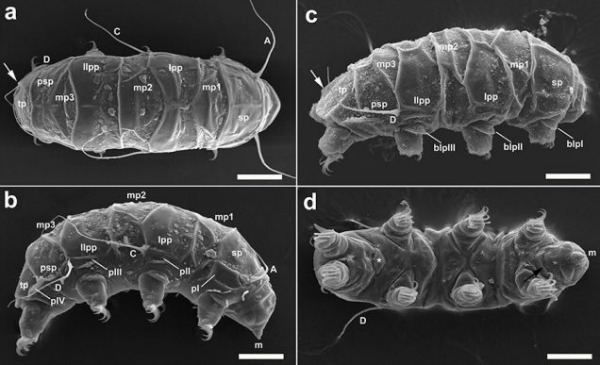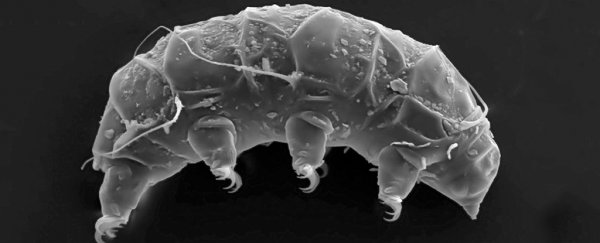So weirdly cute, yet incredibly tough.
Researchers have found a new microscopic tardigrade, also known as water bears, in the lake-shore mosses of Crater Cirque, in Antarctica's Victoria Land. Tardigrades are nature's toughest creature - the only known animal that can survive the vacuum of space.
But there was something different about this tardigrade. Its lobster-like claws and the patterns of hairs on its body were different to the ones the researchers had seen before, so they decided to sequence its DNA to confirm whether the water bear was a new species.
The genetic analysis confirmed the creature is a new species within the genus Mopsechiniscus, and the researchers named it M. franciscae.
 (NERC)
(NERC)
"Mopsechiniscus is unique among tardigrades, as our molecular analysis shows," Dr Sandra McInnes, a tardigrade specialist from the British Antarctic Survey, said in a news release.
"The genus has a lot of more primitive characteristics that suggest it is closer to the group's more distant ancestors."
In the paper, published in the journal Polar Biology, the researchers suggest M. franciscae could be a Gondwanan faunal element, a relic from the supercontinent Gondwana.
Mopsechiniscus water bears are found in different countries, including Australia, where members of this genus are found in Tasmania.
"It's quite an unusual genus to find a new member of, particularly in Antarctica where there are relatively few good tardigrade habitats," explained McInnes.
Three things you may not know about tardigrades:
- The microscopic animal feasts on plant cells and tiny invertebrates.
- Tardigrades dry out completely and replace the water in their bodies with trehalose, a sugar, to survive in extreme weather conditions.
- They've been around for millions of years and have survived five mass extinctions.
- tardigrades are extremophiles, which means they can live in boiling water and solid ice.
Source: National Geographic and NERC
